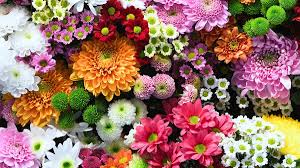
Mauritius is currently facing significant challenges in its flower market. The discrepancy between imports (Rs 123 million) and exports (Rs 52 million) has created a deficit of Rs 71 million from April last year to the present. To tackle these Mauritius Flower Market Challenges, the Food and Agricultural Research and Extension Institute (FAREI) is stepping up efforts. They are actively working to identify flower varieties that can enhance local cultivation and attract customer interest.
Missed Opportunities in the Flower Sector
Mauritius has long missed opportunities in the flower sector, which holds the potential to reduce the disparity between increasing export volumes and the need to cut down imports. During a recent parliamentary session, Mahen Seeruttun, Minister of Agro-Industry and Food Security, highlighted the lucrative nature of the flower market. He was responding to a query from Nando Bodha, the second Member of Parliament for La Caverne–Phoenix.
Current Market Statistics and Export Challenges
According to the minister, the Rs 71 million deficit far exceeds the export earnings of Rs 52 million, derived from exporting 22 tons of flowers to countries like Australia, Canada, France, Italy, Japan, Reunion, and the UAE. Mauritius primarily exports anthuriums, roses, chrysanthemums, and tropical flowers. On the other hand, the country imports 405 tons of flowers, including chrysanthemums, carnations, and gypsophila, mainly from France, India, Iran, and Malaysia.
Limitations in Flower Production and Cultivation
However, Minister Seeruttun openly acknowledged the limitations of Mauritius’s flower production and marketing sector. He pointed out that about 200 producers, including nurserymen, landscapers, and a few anthurium growers, cultivate flowers on 70 hectares in various regions. Notably, around 40 operators have shifted to protected flower cultivation systems, growing roses and gerberas on approximately 40 hectares. Additionally, about ten producers have ventured into growing chrysanthemums on seven hectares. Moreover, the ornamental flowers are grown year-round in greenhouses in humid regions, while tropical flowers thrive in any area throughout the year.
Meeting Local Demand and Overcoming Production Gaps
Local producers often struggle to meet the high demand for flowers during peak occasions such as Valentine’s Day, Mother’s Day, and weddings. To overcome this, the sector looks toward FAREI, which is actively conducting research to support agricultural innovation. FAREI’s research focuses on identifying the best cultivation systems for anthuriums, roses, chrysanthemums, and orchids. They are evaluating materials and flower varieties with strong market appeal and potential to attract buyers. Notably, 2,000 crossbreeding attempts of anthuriums have resulted in four promising new varieties with improved colors, stem lengths, and flower sizes.
Future Prospects: New Varieties and Local Adaptability
In addition, another key initiative involves assessing the adaptability of new varieties of anthuriums, roses, chrysanthemums, and orchids in local conditions. Therefore, cultivators will be encouraged to adopt those varieties that best thrive in local ecosystems and show potential for market success.


